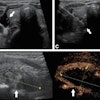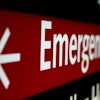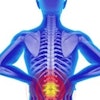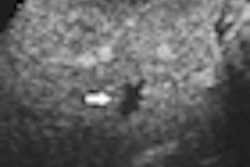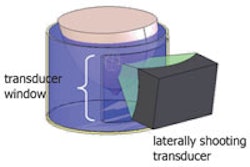A handheld echocardiography scanner can be successfully used in routine scanning of patients referred for echocardiography exams, according to a study published in the Journal of the American Society of Echocardiography.
Researchers from Catholic University Leuven in Leuven, Belgium, studied 349 patients with handheld and high-end echocardiography scanners and found similar results in image quality, as well as for functional assessment, dimension measurements, and valve lesions. In addition, no clinically relevant findings were missed on the handheld scanner.
"The image quality [on the handheld system] for both regular grayscale echocardiography and color-flow Doppler is good and sufficiently reliable for diagnosis-making," co-author Jens-Uwe Voigt, MD, told AuntMinnie.com.
Seeking to evaluate the imaging capabilities of handheld scanners, the researchers scanned the 349 consecutive routine patients with both a Vscan handheld scanner (GE Healthcare, Chalfont St. Giles, U.K.) and a Vivid 7 or E9 high-end echocardiography scanner (GE) (J Am Soc Echocardiogr, December 3, 2010).
The handheld exam was performed by an experienced cardiologist directly before or after the regular echocardiography study, which was performed independently by an experienced echocardiographer. Each examiner was blinded to the other exam's results, according to the researchers.
The grayscale and color Doppler recordings (atpical four-chamber, three-chamber, two-chamber, parasternal long-axis, and short-axis views) from both scanners were digitally stored for later offline assessment. A single echocardiographer then reviewed both exams separately and in changing order, blinded to the results of previous readings.
Segmental visibility of the endocardium served as the image quality measure for the study, and was rated as either 2 (good), 1 (poor), or 0 (not possible). The handheld scanner received a mean image quality score of 1.6 ± 0.5 per patient for segmental visibility of the endocardium, while the high-end system had a mean score of 1.7 ± 0.4.
"In both echogenic and more-difficult-to-scan patients, image quality was comparable," the authors wrote. "Only in patients with very bad echogenicity did [the high-end system] tend toward advantageously better image quality."
Both systems scored regional wall motion similarly (κ = 0.73, p < 0.01). And negligible deviations were found in ejection fraction assessment (bias = 1.8%, 1.96 × standard deviation [SD] = 8.3%); left ventricular measurements (r = 0.99, p < 0.01); interventricular septum (bias = 0.91 mm, 1.96 × SD = 2.1 mm); left ventricular end-diastolic diameter (bias = 0.5 mm, 1.96 × SD = 4.1 mm); and left ventricular posterior wall (bias = 0.61 mm, 1.96 × SD = 2.4 mm).
The handheld system also did not miss any pericardial effusion or valve stenosis. In addition, the researchers found good overall concordance for detection of regurgitations (κ = 0.9, p < 0.01), although regurgitations were mildly overestimated by the handheld system. Any missed regurgitations on the handheld system were graded as "minimal" on the high-end system, according to the authors.
"Grades of regurgitation severity differed by more than two grades between [the two systems] in only 1% of the cases," the authors wrote.
In contrast with the high-end system, the handheld device does not have spectral Doppler capability and includes very limited tools for quantification, according to Voigt. "Therefore, an examination with this device does not replace a 'full echocardiography' with a fully equipped machine," he said.
Because the handheld system does not include those capabilities, readers seeking to grade stenotic lesions had to rely on visual estimation of valve opening on grayscale images, and color changes and visual evaluation of flow velocity on color Doppler images, to grade stenotic lesions, according to the authors.
This shortcoming led to an underestimated severity of aortic stenosis on the handheld unit in 10 of the 21 patients with aortic stenoses. No stenosis was missed, however.
Apart from the lack of spectral Doppler features, though, the high-end system only showed image quality advantages in difficult-to-scan patients, according to the researchers.
"Given the future implementation of full standard echocardiographic functionality, this new class of device has the potential to be safely used by experienced echocardiographers as a diagnostic tool in routine clinical practice," the authors concluded.
Because the handheld systems are inexpensive and will be used by a wide range of specialties, user training is also crucial, Voigt said.
"While cardiologists, experienced in echocardiography, can use [the handheld systems] as far as the capabilities of the devices allow, general practitioners and other medical people will need training," he told AuntMinnie.com. "This training should lead to limited skills for answering a limited range of questions, such as the assessment of [left ventricular] function, pericardial effusion, or valve insufficiency."
By Erik L. Ridley
AuntMinnie.com staff writer
February 3, 2011
Copyright © 2011 AuntMinnie.com

